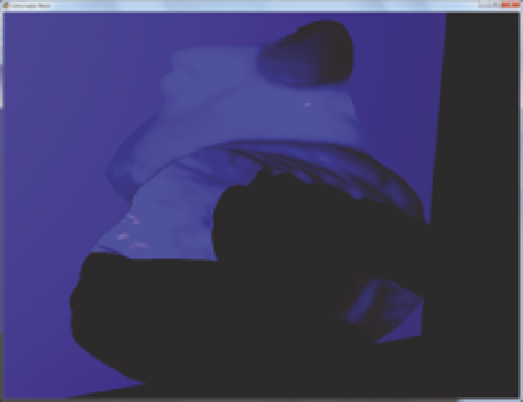Graphics Reference
In-Depth Information
Figure 2.5.
A zoomed-in view of the scene while the algorithm is enabled.
2.4 Optimizations
Areas of potential optimization involve knowing beforehand the topology of the
rendered scene (such as if M+ and M
−
are colliding or not) or determining
beforehand if M
is convex or not. Further, one might leverage the D3D 11.2
fixed function overlay hardware technique [Sorbo 13] to minimize the memory
consumption of the GPU by having a lower dimension swap chain. This means
one could use a lower dimension set of buffers to generate the per-pixel linked
list. We leave these areas of optimization up to the reader, since our goal for the
sample code and code snippets in this chapter was to focus on readability, as well
as providing a generic framework for end developers to work on.
−
2.5 Conclusion
Deformable meshes are a common scenario in several contemporary games, and
being able to produce a flexible environment in which artists have a greater
degree of freedom is always useful. The algorithm discussed in this chapter aims
to provide a solution for this space. As elaborated previously, there are several
ways to optimize the proposed algorithm, but we hope this serves as a building
block for whoever is interested in the deformable mesh scenario.









